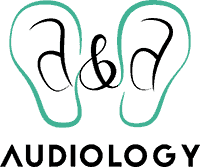- The Connection Between Hearing Loss and Dementia - July 30, 2024
- The Advantages of Rechargeable Hearing Aids - July 16, 2024
- How to Enjoy Music Festivals While Protecting Your Hearing - July 3, 2024
More than 30 million Americans live with hearing loss, one of the country’s leading chronic health conditions. Choosing to intervene in hearing loss has wonderful payoffs like sustained independence, greater connection and communication and increased confidence. Investing in hearing aids can even help to evade a dementia diagnosis down the road.
There is an adjustment period that comes from any major change in lifestyle and hearing aids are not an exception. Instead of viewing the addition of hearing aids as flipping a switch, it’s better to think about it as building a muscle. The first step in adjusting to a life with hearing aids is to become familiar with the components, their intended use and to get a glimpse of future hearing possibilities.
What are hearing aids?
Throughout history, we have evidence that people have used a variety of methods to treat hearing loss. This ranges from Egyptian cures of goat urine and olive oil that were poured into the ear to bloodletting in the middle ages (which was thought to reduce ‘bad humors’ in the body). Ear trumpets emerged as a medical technology in the 17th century and for hundreds of years, was the most successful means of improving hearing.
Fast forward to modern times and we have today’s hearing aids for a much more successful intervention to treat hearing loss. They are amplification systems at their core, but with the advent of computer technology, are much more sophisticated in their delivery.
Every hearing aid consists of a microphone, amplifier, speaker, and a battery. The microphone captures sound from the world around you and transforms audio waves into digital audio signals. The amplifier increases the volume of the sound while the speaker delivers it to the ear. The battery serves as a power source and many of today’s models feature rechargeable batteries.
How hearing aids ease listening
For many people who acquire hearing loss later in life due to aging or exposure to excessive noise, the cause of their hearing loss has to do with the tiny cells of the inner ear. These cells receive sound, transform it into electrical signals and send that sound information to the brain for processing.
The inner ear cells are non-regenerative, which means they don’t repair themselves or reproduce. Instead, they are damaged over time and we lose access to the wide spectrum of sound, are able to send less sound information to the brain and experience this as hearing loss.
Hearing aids fundamentally work by providing more sound to the ear, so that the inner ear cells we have can convert that to sound information. The brain doesn’t have to work as hard to decipher speech and other complicated sounds so that the process of listening becomes easier and less frustrating.
Types of hearing aids
There are two main categories of hearing aids: behind-the-ear and in-the-ear. Both have their pros and cons and your audiologist is a good place to start when trying to determine which will work better for your needs and your individual pattern of hearing loss.
Behind-the-ear hearing aids serve moderate to severe types of hearing loss best, but tend to be less concealable than in-the-ear models. They’re also less susceptible to damage from moisture and can sometimes come with more advanced features because of their larger size. They’re identifiable because part of the product is housed behind the ear — typically the microphone and battery — while the microphone component sits in the ear to best deliver sound. That said, there are a variety of configurations among different manufacturers.
In-the-ear hearing aids, on the other hand, sit completely within the ear and sometimes entirely within the ear canal itself. They are perfect for people who have mild to moderate hearing loss and are seeking the most unobtrusive hearing aid option.
Beyond these types of hearing aids, there are endless options on today’s market and narrowing down your best fit will depend on your hearing loss and lifestyle requirements.
Technological advancements
Most of today’s hearing aids are also equipped with a computer that helps to pinpoint the sounds you want to hear, filter out what you don’t and provide neat upgrades like bluetooth connectivity so that you can connect your hearing aids to personal devices.
A large number of manufacturers also offer apps so that you can get the most out of your hearing aids. This can reduce frustration in changing settings, particularly for those tiny in-the-ear hearing aid models, so that toggling to a program better suited to your listening environment is as easy as tapping your phone screen. They can also help you to evaluate the success of your hearing aids and monitor how often you are using them. This data is helpful to present to your audiologist who can use it to make suggestions and tweaks for even better hearing. Contact us today.

